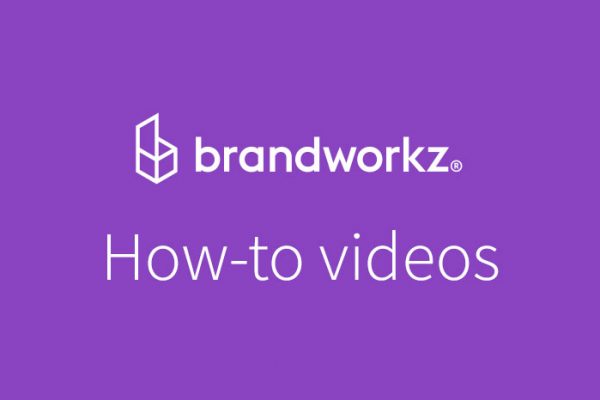Any and every business, regardless of size, deserves the best branding strategies possible. With that said, we should address the elephant in the room: small businesses don’t usually have the budgets required to carry out those strategies in the first place. But taking up a digital asset management (DAM) system is an easy win.
Digital asset management software is essential for any company struggling to control and manage assets (the materials that make up your branding). With so many digital media channels emerging and the vast quantities of content to be managed and distributed accurately, it’s hard to keep on top of it all, let alone ensure all-important brand consistency. A DAM platform solves this problem. Your approved, on-brand, multi-channel marketing content can be centralised, managed, and distributed from one simple, intuitive online system.
But what about the cost? I hear you cry. Smaller businesses are right to feel sceptical and uneasy about investing in a DAM. Will it cost me the earth? Will I know how to control it, and will it REALLY make things all the more efficient?
Simple answers: no, yes, and yes. Here we will explain why digital asset management for small businesses is the gateway to better branding, improved bottom line, and business growth – nice.
Suggested reading: A DAM is essential to great brand management and marketing… but what’s the difference between the two? Get up to speed by checking out our blog Brand Management vs Marketing | Redefining Brand Management in 2022.
They support your growth
Let’s start with a simple truth. Small businesses aren’t likely to be able to match the resources and budgets larger businesses would be able to devote to their DAM. This is an especially painful point as vast amounts of digital content are still crucial to any small business’s growth. The accessibility and efficiency of a light-touch but powerful DAM platform will bring the best possible ROI and give the most significant potential for brand and business growth.
A DAM platform is crucial to taking small businesses forward. Why?
- Digital problems demand digital solutions.
- Leading-edge software platforms are the only way to ensure you’re one step ahead of market trends, thanks to consistent upgrades to your system.
- DAMs give you greater control and insights over your assets, enabling you to make crucial, well-informed decisions on where to invest your precious time and resources as a small business owner.
They save on resources
As hardworking and valuable as you and your team members are bound to be, it’s a tall order to expect anyone to be able to manage your digital assets manually — at least in a way that doesn’t end in chaos. Regarding saving costs, taking up a DAM that provides greater efficiency against its investment is much more productive than tasking one person to manage your assets. DAMs provide workflow capabilities, integrating approval and annotation to dramatically streamline the process of classifying, controlling and creating your assets.
Our research shows that companies dedicate over 6,000 hours yearly to creating new assets. Any savings made here will have a massively positive impact on any business, especially a small one.
The availability and easy access to some great and innovative marketing tools will mean you can’t easily keep a lid on what systems your people are using. Recognising this, you should always look for a DAM solution that integrates with the other tools in your toolkit.
The vital thing to consider is easy access to assets. Huge amounts of time and energy can be wasted maintaining permissions and even more in trying to find the people who can give you access in the first place.
Integrating your DAM with the creative software used to produce your marketing deliverables (for example, Adobe, Microsoft, Google, Canva) is a game-changer. It makes it possible to access on-brand assets and removes the risk that creatives continue to use unapproved assets because they can’t, or won’t, log in to a part of your ever-expanding content creation stack.
Better access management, real-time updates on changes and the ability to annotate within the DAM itself can certainly send efficiency soaring while simultaneously ticking a few items off your to-do list. Streamlining storage and creating and approving assets simplify processes, improve brand consistency, and make updating your material easier. So, it’s worth looking at this in a bit more detail.
Suggested reading: There’s still time to prim your brand management for the year! Get started by reading 7 Brand Management Tips for 2022!
They enable smoother workflows
As they say, time is money, and a DAM makes it easier to get things done faster and better. How?
- By holding all approved digital assets centrally, nothing gets lost in translation, and nobody has to scramble to find what they need.
- By making it easy to search for what you need when you need it with intelligent meta-data tagging.
- By being easy to use alongside brand management software, which will allow for assets to be created, reviewed and approved in the same place your assets are stored.
Brand Management Software with Digital Asset Management built-in provides a standardised approach to the entire brand management function. For example, customisable templates enable amendments to creative files to be made directly within one system and one process. Virtually anyone can create campaign-specific assets on-demand — all without impacting on design decisions that have already been signed off. Get more done in less time with fewer resources – a big win for small businesses everywhere.
👉 Want to take your brand further? Check out The Brand Consistency Toolkit for free. 👈
They’re everywhere
There is a wide range and variety of DAMs available on the market today – ranging from grow-your-own flavours to mega software from industry titans. The downside, of course, is that not all of them may be that advanced or suit your budget. Although you could repurpose something like SharePoint or a manual file-folder system, a full DAM is the best thought of (and should be thought of) as software purpose-built for managing digital assets.
Any half-decent DAM platform will follow a few fundamentals such as:
- Encoding and indexing
- Metadata creation
- Advanced search capabilities
- Version control
- Governance through permissions
- Auditing and reviewing notifications
- Simple downloading capabilities
- Transcoding.
With that said, all businesses, regardless of size, deserve more than “half-decent.” Digital asset management software is essential for any company. All DAM systems differ at fundamental levels. For example, small businesses will likely handle a variety of images, videos, text, and much more. That means you could realistically be required to engage with digital assets that range from MOVs to SVGs. You’d be forgiven for expecting this to be possible in every DAM system. It isn’t.
What else should you look out for to find a home for all your digital assets and have all the tools needed to manage their day-to-day?
Here’s what we at Brandworkz think your shopping list should include:
- The ability to get your assets in the system quickly with our super-fast uploader
- Storage of assets securely with preferably an ISO-27001 certified vendor
- Powerful and intuitive search to quickly find what you are looking for
- A means of sharing assets effortlessly in any way you want
- Flexibility to download assets in any format with customisable download wizards
Above all of these features, metadata is the secret sauce to power your Digital Asset Management system. A DAM should make metadata management child’s play. It would be best if you had:
- A fully customisable tagging system tailored around the information you need to identify
- Reporting to gain extra insights on asset use and ensure users are aware of the terms of use
- Automatic extraction and storage of file information to power search
- AI-powered keyword generation based on image contents
- Process-driven metadata creation to ensure all assets have metadata when uploaded.
Suggested reading: You’re probably already convinced of the great ROI you get with a DAM — but is your brand manager? Use our blog, How to Make the Business Case for Digital Asset Management, to back up your case!
Maximise DAM with brand management software
The way a small business handles creative files can dictate how efficient it is and, as a result, how much it can grow. Implementing a DAM is no small task, but it is entirely achievable.
But you shouldn’t stop there. Go for a DAM and brand management software (BMS) combination to see even greater ROI. Fundamentally, DAM needs to sit at the heart of a broader brand management context — working with (rather than against) asset approval workflows, templates, and more to boost your brand.
We designed Brandworkz to bridge that gap by providing DAM and BMS capabilities with digital and print templates, reporting and analytics tools, editable brand guidelines, and improved workflows. Start a demo with us today and see why digital asset management is ideal for ALL businesses, big and small.





